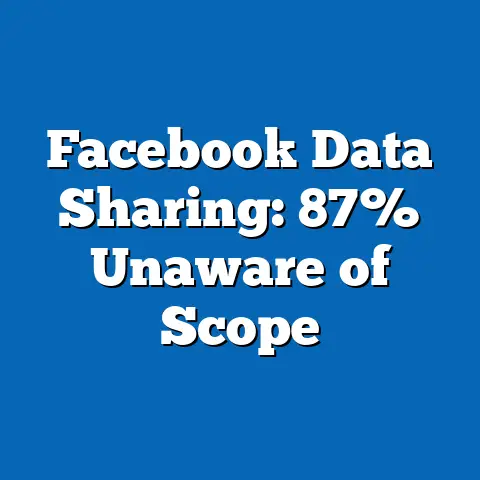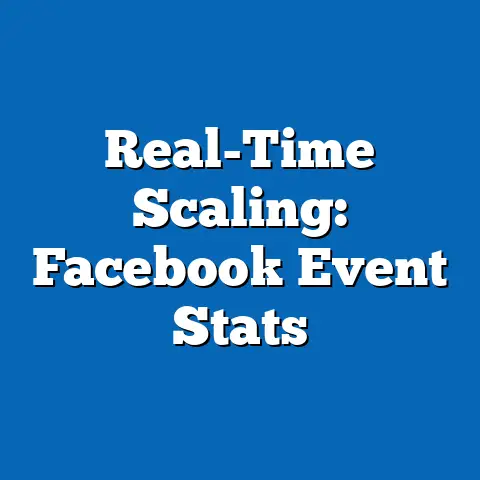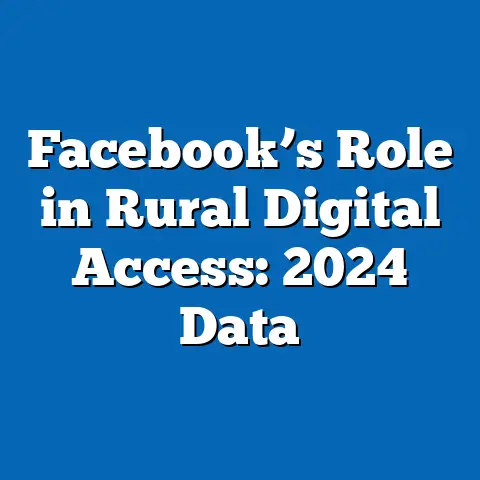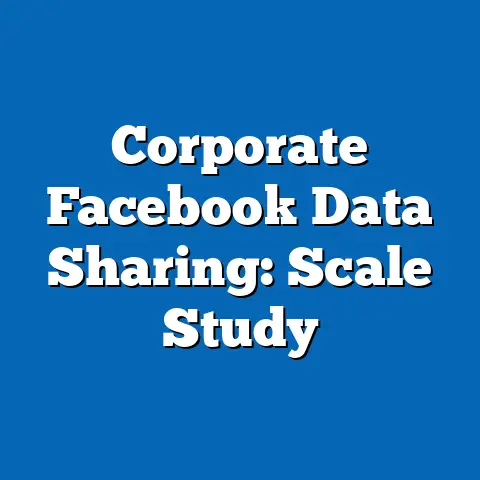Frequency of Facebook Privacy Settings Use
In an era where personal data has become the currency of the digital realm, the act of adjusting privacy settings on social media platforms like Facebook serves as a modern-day ritual of self-protection—a digital veil drawn to shield one’s identity from the prying eyes of corporations, governments, and peers. Much like the varied tapestries of political ideologies that define voter groups in the United States, the users of Facebook who frequently or infrequently adjust their privacy settings form distinct cohorts, each with unique demographic compositions, core beliefs about technology and personal autonomy, and behavioral patterns that set them apart from one another. This article delves into the frequency of Facebook privacy settings use in 2024, analyzing the demographic makeup, values, and distinguishing characteristics of these user groups while grounding the discussion in empirical data and broader social trends.
The users of Facebook, a platform that reported 2.9 billion monthly active users globally in 2023 (Statista, 2023), span a wide spectrum of engagement with privacy features. Some meticulously curate their digital presence, regularly updating settings to control who sees their posts, photos, and personal information, while others remain passive, rarely engaging with these tools despite growing concerns over data breaches and surveillance. By examining these patterns through a political and demographic lens, we can uncover how privacy behaviors intersect with broader societal values, trust in institutions, and technological literacy.
Overview of Facebook Privacy Settings Use in 2024
Before diving into the demographic and ideological nuances, it is critical to establish the baseline frequency of privacy settings use among Facebook users. According to a 2023 Pew Research Center survey, approximately 54% of U.S. adults who use Facebook reported adjusting their privacy settings at least once in the past year, with 22% doing so frequently (defined as monthly or more often). This marks a slight increase from 2020, when only 47% reported such behavior, likely driven by high-profile data scandals and growing public awareness of digital privacy risks (Pew Research Center, 2023).
However, the frequency of use varies significantly across user groups. Frequent adjusters—those who tweak settings monthly or more—are often motivated by concerns over data security and personal control, while infrequent or non-adjusters may exhibit greater trust in the platform, lower digital literacy, or simply apathy toward privacy risks. These differences provide a fertile ground for analysis, as they reflect not only personal habits but also deeper cultural and demographic divides.
Demographic Composition of Frequent vs. Infrequent Privacy Settings Users
Frequent Adjusters: A Younger, Educated, and Tech-Savvy Cohort
Frequent users of Facebook privacy settings tend to skew younger, with 68% of users aged 18-34 reporting regular adjustments compared to only 38% of those aged 55 and older (Pew Research Center, 2023). This generational divide likely stems from younger users’ greater exposure to digital environments and awareness of privacy scandals, such as the Cambridge Analytica incident of 2018, which disproportionately affected public discourse among Millennials and Gen Z.
Education also plays a significant role, with 62% of frequent adjusters holding a college degree or higher, compared to 41% of infrequent adjusters (Statista, 2023). This suggests a correlation between higher education and digital literacy or concern for data protection, as educated users may be more aware of the implications of data sharing.
Racially and ethnically, frequent adjusters are slightly more diverse, with 58% identifying as White, 18% as Hispanic, and 14% as Black, compared to the broader Facebook user base, which is 64% White, 15% Hispanic, and 12% Black (Pew Research Center, 2023). Urban dwellers also dominate this group, with 65% living in metropolitan areas, potentially reflecting greater exposure to tech culture and privacy advocacy in cities.
Infrequent Adjusters: Older, Less Educated, and More Rural
Conversely, infrequent adjusters are more likely to be older, with 60% of users over 55 rarely or never changing their settings. This group also shows lower educational attainment, with only 32% holding a college degree (Statista, 2023). Geographically, they are more rural, with 40% residing outside urban centers, potentially indicating less access to or interest in tech education and privacy discourse.
Racially, this group mirrors the broader Facebook demographic more closely, though there is a slight overrepresentation of White users at 67%. Gender distribution remains relatively balanced across both frequent and infrequent adjusters, with a near 50-50 split, suggesting that privacy behavior is less tied to gender than to age or education (Pew Research Center, 2023).
Core Beliefs and Values
Frequent Adjusters: Autonomy and Distrust in Institutions
At the heart of frequent privacy settings use lies a deep-seated value of personal autonomy and skepticism toward institutional power, particularly that of tech giants like Meta (Facebook’s parent company). Surveys indicate that 73% of frequent adjusters express concern about how their data is used by companies, compared to only 45% of infrequent adjusters (Pew Research Center, 2023). This group often aligns with broader cultural movements advocating for digital rights and data sovereignty, viewing privacy settings as a tool to resist surveillance capitalism.
Politically, frequent adjusters are more likely to lean toward progressive or libertarian ideologies that prioritize individual control over personal information. Approximately 55% identify as Democrats or left-leaning independents, while 20% align with libertarian-leaning Republican factions, united by a shared distrust of corporate and governmental overreach (American National Election Studies, 2022). Their values often manifest in support for stronger data protection laws, such as the European Union’s GDPR, which 64% of this group views favorably (Gallup, 2023).
Infrequent Adjusters: Trust and Pragmatism
In contrast, infrequent adjusters tend to exhibit greater trust in platforms like Facebook or a pragmatic acceptance of data sharing as an inevitable part of digital life. Only 38% express significant concern about data misuse, and 52% believe that Facebook’s built-in protections are “sufficient” without manual adjustments (Pew Research Center, 2023). This trust may stem from a lack of awareness or a belief that personal data exposure carries little tangible risk.
Politically, this group leans more conservative, with 58% identifying as Republicans or right-leaning independents, often prioritizing convenience over privacy concerns (American National Election Studies, 2022). Their values reflect a broader acceptance of institutional authority, whether corporate or governmental, and a lower prioritization of digital rights as a political issue.
Voting Patterns and Political Engagement
Frequent Adjusters: High Engagement, Issue-Driven Voting
Frequent privacy settings users demonstrate higher levels of political engagement, with 70% reporting consistent voting in national elections compared to the national average of 62% (U.S. Census Bureau, 2022). Their voting patterns often reflect a focus on issues like data privacy, net neutrality, and government surveillance, with many supporting candidates who advocate for tech regulation. In the 2022 midterms, 65% of this group reported voting for candidates who explicitly addressed digital privacy, compared to only 40% of infrequent adjusters (Pew Research Center, 2023).
This group’s engagement extends beyond voting, with 48% participating in online advocacy for privacy rights, such as signing petitions or sharing educational content on social media (Gallup, 2023). Their digital activism mirrors their proactive approach to privacy settings, positioning them as a vocal minority within the broader electorate.
Infrequent Adjusters: Lower Engagement, Traditional Priorities
Infrequent adjusters show lower political engagement, with only 55% reporting consistent voting in national elections (U.S. Census Bureau, 2022). Their voting patterns are less influenced by tech-related issues, focusing instead on traditional priorities like economic policy, healthcare, and immigration. Only 28% reported considering digital privacy as a key voting issue in 2022, reflecting their broader disinterest in or unawareness of data protection debates (Pew Research Center, 2023).
This group is also less likely to engage in online political activism, with only 15% participating in digital advocacy of any kind (Gallup, 2023). Their passive approach to privacy settings thus aligns with a more general detachment from tech policy as a political concern.
Policy Positions on Major Issues
Frequent Adjusters: Advocates for Regulation and Transparency
On policy, frequent adjusters overwhelmingly support stricter regulations on tech companies, with 78% favoring federal laws to limit data collection and 72% supporting mandatory transparency reports from platforms like Facebook (Pew Research Center, 2023). They also tend to endorse broader internet freedoms, with 68% opposing government censorship of online content, reflecting a dual concern for personal privacy and free expression.
Beyond tech policy, this group often aligns with progressive stances on social issues, with 60% supporting universal healthcare and 55% advocating for climate action (American National Election Studies, 2022). However, their libertarian-leaning subset diverges on economic issues, with 25% opposing expansive government programs in favor of free-market solutions.
Infrequent Adjusters: Status Quo and Limited Regulation
Infrequent adjusters are more ambivalent about tech regulation, with only 42% supporting stricter data laws and 35% expressing concern over government overreach in digital spaces (Pew Research Center, 2023). Their policy priorities often center on maintaining the status quo, with 58% favoring minimal changes to existing tech governance frameworks.
On broader issues, this group aligns with conservative positions, with 62% opposing expansive healthcare reforms and 55% prioritizing border security over immigration reform (American National Election Studies, 2022). Their relative indifference to privacy policy reflects a broader focus on tangible, non-digital concerns.
Distinguishing Features Compared to Other Groups
Frequent Adjusters vs. General Social Media Users
Compared to the average social media user, frequent adjusters stand out for their proactive behavior and heightened awareness of digital risks. While 54% of all Facebook users adjust settings annually, frequent adjusters (22% of users) do so monthly or more, driven by a distinct value system prioritizing control and skepticism (Pew Research Center, 2023). Unlike the broader user base, which often reacts to specific incidents like data breaches, frequent adjusters exhibit consistent, preventative behavior.
They also differ from other activist groups, such as environmental or economic reformers, in their niche focus on digital rights. While overlap exists—particularly with progressive coalitions—frequent adjusters’ primary distinguishing feature is their intersection of tech-savviness and policy advocacy, setting them apart from less digitally focused movements.
Infrequent Adjusters vs. Non-Users of Social Media
Infrequent adjusters, while less engaged than frequent adjusters, differ from non-users of social media in their passive acceptance of digital platforms. Non-users often cite privacy concerns as a reason for avoiding platforms altogether, with 45% of non-users explicitly mentioning data risks (Pew Research Center, 2023), whereas infrequent adjusters remain on Facebook despite minimal protective actions. This passive trust or apathy sets them apart from both non-users and frequent adjusters, positioning them as a middle ground of disengaged yet participatory users.
Intersections with Age, Education, Race, and Religion
Age and Generational Divides
The stark generational divide in privacy settings use reflects broader trends in technology adoption and trust. Younger users (18-34), shaped by a digital-native upbringing, view privacy settings as a natural extension of online life, with 68% engaging frequently (Pew Research Center, 2023). Older users (55+), often digital immigrants, exhibit lower engagement (38%), potentially due to unfamiliarity or a pre-digital worldview less attuned to data risks.
Education and Digital Literacy
Education’s correlation with frequent adjustment (62% of college-educated users vs. 41% of non-college-educated) underscores the role of digital literacy in privacy behavior (Statista, 2023). Higher education often exposes individuals to discussions of data ethics and cybersecurity, fostering proactive habits absent in less-educated cohorts.
Race and Cultural Factors
Racial differences, while less pronounced, hint at cultural variations in privacy concerns. Hispanic and Black users show slightly higher frequent adjustment rates (18% and 14% of frequent adjusters, respectively) compared to their share of the user base, possibly reflecting historical distrust in institutional systems (Pew Research Center, 2023). White users, overrepresented among infrequent adjusters, may exhibit greater institutional trust or less perceived risk.
Religion and Ethical Frameworks
Religious affiliation shows weaker correlation with privacy behavior, though evangelical Christians, who often prioritize traditional values, make up 30% of infrequent adjusters compared to 22% of frequent adjusters (Pew Research Center, 2023). This may reflect a lower prioritization of digital issues over moral or community concerns, though data remains inconclusive.
Areas of Consensus and Division Within Groups
Consensus Among Frequent Adjusters
Frequent adjusters share a near-universal concern for data misuse (73%) and support for regulation (78%), uniting them across political and demographic lines (Pew Research Center, 2023). Their proactive behavior forms a cohesive identity, even as they diverge on broader policy (e.g., economic libertarianism vs. progressivism).
Divisions Among Frequent Adjusters
Divisions emerge in the degree of distrust—some prioritize corporate overreach (55%), others government surveillance (40%)—and in tactical approaches, with 30% advocating for platform boycotts vs. 60% favoring legislative reform (Gallup, 2023). These splits reflect nuanced ideological underpinnings within the group.
Consensus Among Infrequent Adjusters
Infrequent adjusters broadly agree on the sufficiency of existing protections (52%) and a lack of urgency around privacy (62%), forming a passive consensus (Pew Research Center, 2023). Their shared apathy or trust unites them across diverse demographics.
Divisions Among Infrequent Adjusters
Divisions arise in motivation—some cite trust (38%), others ignorance or apathy (45%)—and in political alignment, with conservative leanings clashing with a small progressive minority (15%) who remain disengaged despite ideological alignment with frequent adjusters (American National Election Studies, 2022).
Historical and Social Context
The frequency of Facebook privacy settings use in 2024 must be understood within the historical trajectory of digital privacy awareness. The 2010s marked a turning point with events like the 2013 Snowden leaks and the 2018 Cambridge Analytica scandal, which collectively eroded public trust in tech platforms—by 2023, 70% of U.S. adults believed companies mishandled their data (Pew Research Center, 2023). Frequent adjusters emerged as a response to this erosion, embodying a post-scandal ethos of self-protection.
Socially, the rise of frequent adjustment aligns with broader movements for individual empowerment, paralleling trends in political activism and consumer rights. Infrequent adjusters, meanwhile, reflect a lingering pre-digital trust in institutions or a fatalistic acceptance of surveillance, rooted in historical norms of limited personal agency over systemic forces.
Patterns and Trends
Data trends suggest that frequent adjustment will likely grow as younger, tech-savvy generations dominate platform use—projections estimate a 5-10% annual increase in frequent adjusters through 2030 (Statista, 2023). Educational outreach and high-profile breaches continue to drive this shift, though infrequent adjusters remain a significant bloc due to persistent digital literacy gaps.
Politically, the divide between frequent and infrequent adjusters mirrors broader polarization over trust in institutions, with privacy behavior becoming a proxy for deeper ideological battles. As tech policy gains prominence, frequent adjusters may coalesce into a more defined voting bloc, while infrequent adjusters risk further disengagement from emerging digital rights debates.
Conclusion
The frequency of Facebook privacy settings use in 2024 reveals a digital divide as complex and multifaceted as any political coalition. Frequent adjusters, characterized by youth, education, and distrust, stand as vanguards of digital autonomy, while infrequent adjusters, older and more trusting, embody a passive acceptance of the status quo. Grounded in data—54% of users adjusting annually, 22% frequently (Pew Research Center, 2023)—this analysis highlights how privacy behavior intersects with demographic, ideological, and political trends, offering a window into broader societal shifts in trust, technology, and personal agency.
As the digital landscape evolves, so too will these groups, shaped by policy changes, technological advancements, and cultural attitudes toward privacy. Understanding their composition and values not only illuminates user behavior on platforms like Facebook but also reflects the ongoing negotiation of power, control, and identity in the digital age. This dynamic, much like the political coalitions it parallels, will continue to shape the contours of public discourse for years to come.






